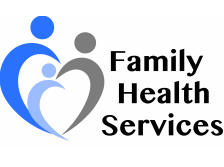May is Stroke Awareness Month
A stroke happens when the blood supply to part of your brain is suddenly interrupted. Then brain tissue is damaged. Most strokes happen because a blood clot blocks a blood vessel in the brain or neck. A stroke can cause movement problems, pain, numbness and problems with thinking, remembering or speaking. Some people also have emotional problems, such as depression, after a stroke.
If you have diabetes, your chances of having a stroke are 1.5 times higher than in people who don’t have diabetes. But your risk is even greater if:
- you’re over age 55
- your family background is African American
- you’ve already had a stroke or a transient ischemic (ih-SKEE-mik) attack (also called a TIA or a mini-stroke)
- you have a family history of stroke or TIAs
- you have heart disease
- you have high blood pressure
- you’re overweight
- you have high LDL (bad) cholesterol and low HDL (good) cholesterol levels
- you are not physically active
- you smoke
You can’t change some of these risk factors. But you can lower your chances of having a stroke by taking care of your diabetes and tackling some of the other risk factors, such as losing weight if you’re overweight.
Typical warning signs of a stroke develop suddenly and can include:
- weakness or numbness on one side of the body
- sudden confusion or trouble understanding
- trouble talking
- dizziness, loss of balance, or trouble walking
- trouble seeing out of one or both eyes
- double vision
- severe headache
If you have warning signs of a stroke, call 9-1-1 right away. Getting treatment as soon as possible after a stroke can help prevent permanent damage to your brain.
For more information on Strokes: https://www.stroke.org/

A healthy diet can help you reduce the risk of chronic diseases, improve your overall health, and help you reach or maintain a healthy weight. Eating healthy includes making informed decisions about food choices and balancing your calories. Here’s a tasty meal to try.
Sweet and Tangy Salmon with Green Beans
Ingredients
- 4 salmon fillets (6 ounces each)
- 1 tablespoon butter
- 2 tablespoons brown sugar
- 2 tablespoons reduced-sodium soy sauce
- 2 tablespoons Dijon mustard
- 1 tablespoon olive oil
- 1/2 teaspoon pepper
- 1/8 teaspoon salt
- 1 pound fresh green beans, trimmed
Directions
- Preheat oven to 425°. Place fillets in a 15x10x1-in. baking pan coated with cooking spray. In a small skillet, melt butter; stir in brown sugar, soy sauce, mustard, oil, pepper and salt. Brush half of the mixture over salmon.
- Place green beans in a large bowl; drizzle with remaining brown sugar mixture and toss to coat. Arrange green beans around fillets. Roast until fish just begins to flake easily with a fork and green beans are crisp-tender, 14-16 minutes.
Nutrition Facts
1 fillet with 3/4 cup green beans: 394 calories, 22g fat (5g saturated fat), 93mg cholesterol, 661mg sodium, 17g carbohydrate (10g sugars, 4g fiber), 31g protein.
Diabetic Exchanges: 5 lean meat, 1-1/2 fat, 1 vegetable, 1/2 starch.


COMMUNITY OFFERINGS
HEALTH & WELLNESS SCREENING – offered by Firelands Regional Medical Center
You must Pre-register for all Lab Work at 419-557-7840.
Castalia Health & Wellness Screening
Dr. Kuns’ Office
101 South Washington
Castalia, OH
Saturday May 11
7:30 AM – 9:30 AM
Huron Health & Wellness Screening
Dr. Williamson Office
300 Williams Street
Huron, OH
Saturday June 15
7:30 AM -9:30 AM
Health & Wellness Screenings include:
- Complete Blood Count with Metabolic & Lipid Panel (No Eating or Drinking for 12 Hours – Water Allowed – includes liver and kidney function studies, fasting blood sugar, thyroid, cholesterol, HDL/LDL and triglyceride levels along with a complete blood count.) – $45;
- Hemoglobin A1C (A three month report card on how well your blood sugars have been running. A test used to diagnose diabetes and/or to evaluate how well your treatment plan is working.) – $25;
- PSA (Prostate Specific Antigen)- $30;
- Vitamin D – $35;
- TSH – $25
Diet and exercise are an essential part of diabetes management. So is routine testing.
The A1C test—also known as the hemoglobin A1C or HbA1c test—is a simple blood test that measures your average blood sugar levels over the past 3 months. It’s one of the commonly used tests to diagnose prediabetes and diabetes, and is also the main test to help you and your health care team manage your diabetes. Higher A1C levels are linked to diabetes complications, so reaching and maintaining your individual A1C goal is really important if you have diabetes.
Last quarter, 68% of our diabetic patients had an A1C of less than 9%. Talk with your provider to discuss the right options for you, including programs such as DEEP.
Diabetes Empowerment Education Program – DEEP
WHEN:
May 9, 2019 – June13, 2019
6:00 pm – 8:00 pm
WHERE:
Sandusky Library
114 E Adams Street, Sandusky
COST:
Free
CONTACT:
Serving Our Seniors /Tina Elmlinger
419-624-1856
The presenter is Tina Elmlinger, Healthcare Advocate Trainer. Classes are held once a week for six weeks for Erie County residents who are aged 60 or older and are pre-diabetic or diabetic. A spouse or caregiver may also attend. Advanced registration is required, 419-624-1856. Please call and leave your name, phone number and the name of the program you wish to attend. If the class is cancelled, you will be notified.
Additional dates and locations:
WHEN:
July 10, 2019 – August 14, 2019
1:00 pm – 3:00 pm
WHERE:
Kelleys Island School
528 Division Street, Kelleys Island
Cost is free, but you must pre-register.
Hayes Ave Location
1912 Hayes Avenue
Sandusky, Ohio 44870
Phone: 419-502-2800
Fax: 419-502-2821
Monday:
8:00 am – 5:00 pm
Tuesday – Friday:
8:00 am – 6:00 pm
Saturday (2nd and 4th):
8:30 am – 12:30 pm
E. Water Street Location
620 E. Water St., Ste. A
Sandusky, Ohio 44870
Phone: 419-502-2800
Fax: 419-502-2821
Monday, Tuesday, Thursday:
8:00 am – 6:00 pm
Wednesday, Friday:
8:00 am – 5:00 pm
Norwalk Location
265 Benedict Avenue
Norwalk, Ohio 44857
Phone: 419-502-2800
Fax: 419-502-2821
Monday – Friday:
8:00 am – 5:00 pm


